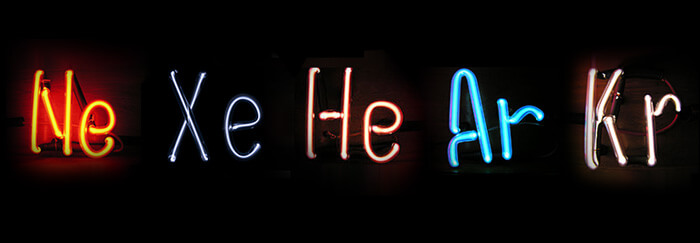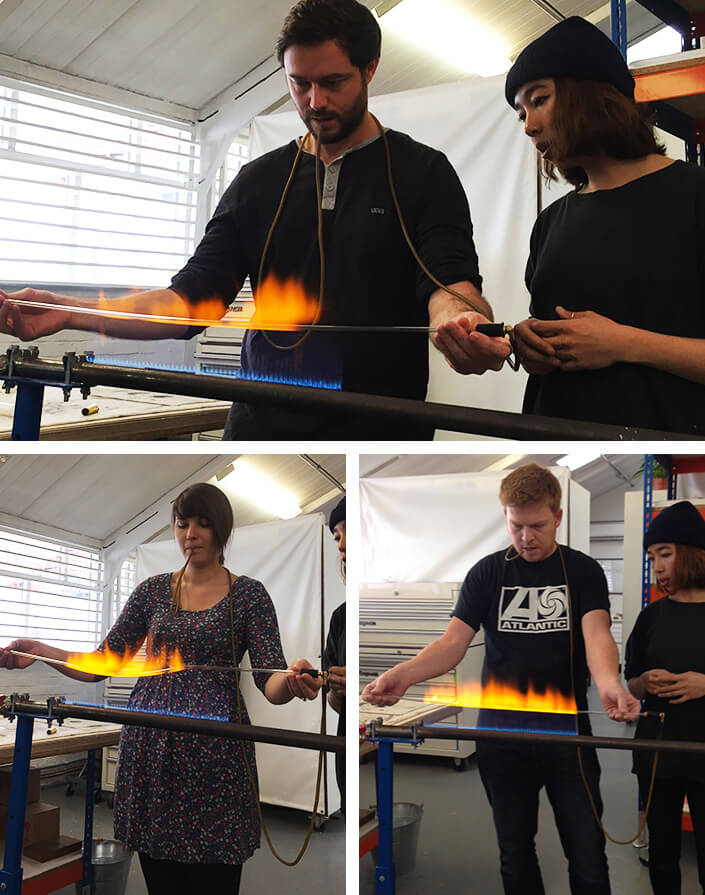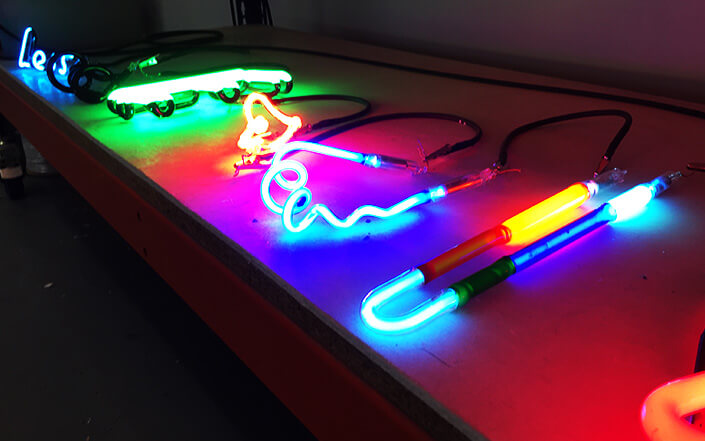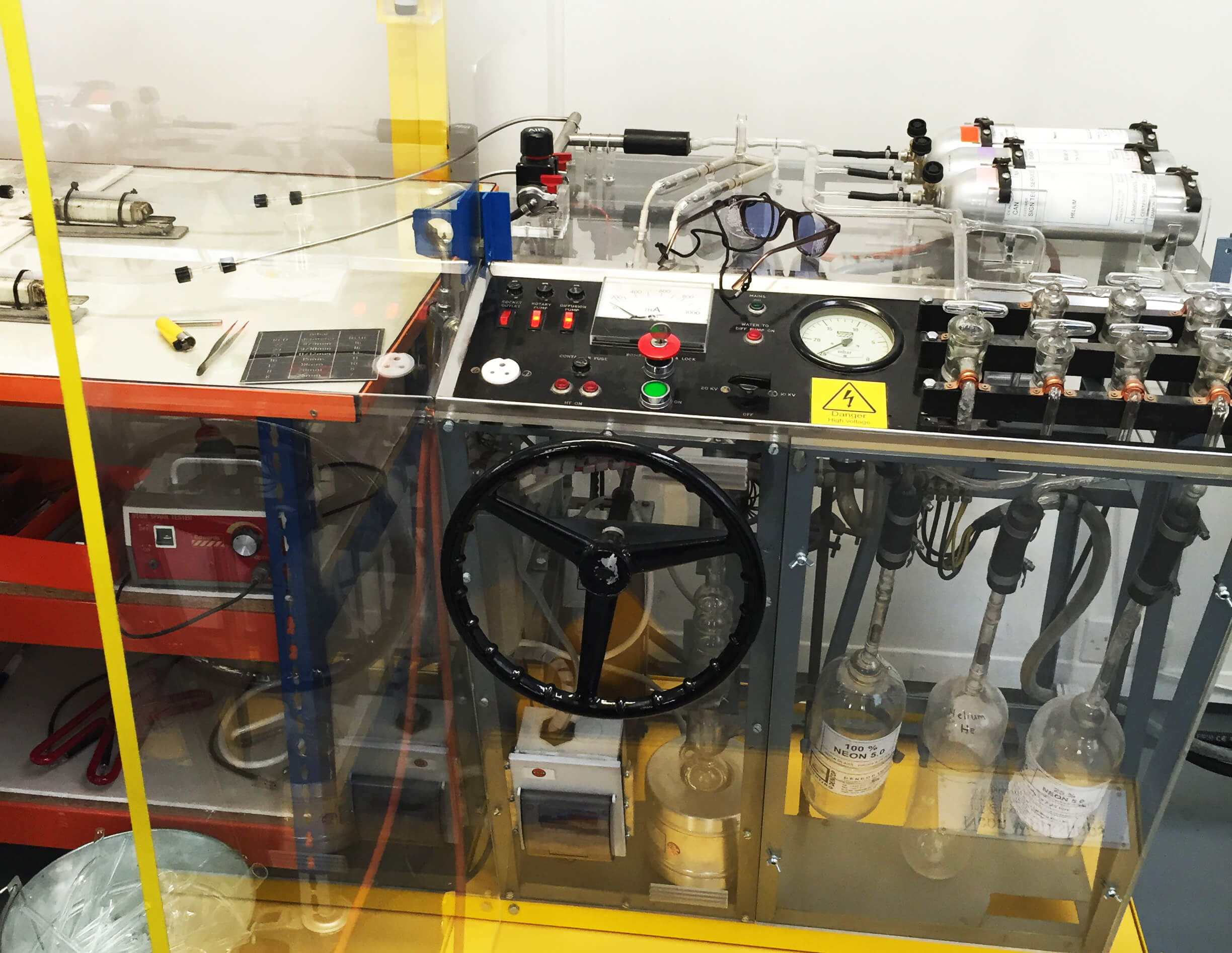Seeing the light
Designers all need inspiration, it’s very easy to sit staring at your computer at the start of a project viewing the usual design websites like www.awwwards.com and www.designspiration.net but I’m a firm believer in getting away from your screen and doing something completely different to be truly inspired. The design team have done some screen-printing and a bit of laser cutting down at inc.workshop in Leeds city centre in the past but when Nath pointed out the Neon Workshops Studio in Wakefield we thought we’d give it a go.
Neon Workshop Session
None of us had any experience of Neon at all so we opted for the 2 hour taster session which gave a really interesting history to Neon, the process by which it is made and some hands on experience of bending and moulding glass into some basic shapes.
What we learned
Neon gas was given its name from the Greek word ‘neos’ meaning ‘new’. It was a British invention but first used for advertising in Paris in 1912 and it soon found its way to America. We discovered that neon gas only actually makes one colour – red. All other colours of ‘neon signs’ are made using different gasses such as helium, xenon and mercury. They can be mixed or used on their own depending on the desired colour. You can also create coloured light by using coloured glass, but this is more expensive to source.
 Different noble gasses that can be used to make coloured neons. Source: Boundless.com
Different noble gasses that can be used to make coloured neons. Source: Boundless.com
Task 1
Our first task was to cut a thick piece of glass tube which we would then use to make a bend in, there were three types of bends to choose from. To cut the glass you had to make a score mark in it and then hold it out in front of you and snap it in half (most of use were covering our faces at this point) but despite us thinking that glass would shatter everywhere, it actually snaps clean in half!
 About to break the tube in half & then bend it into shape.
About to break the tube in half & then bend it into shape.
Then you had to take your tube and heat it over a bunsen burner. Once the glass began to melt you made the bend whilst gently blowing through the tube attached to the end – this was the ensure the middle of the tube didn’t collapse in on itself during the bending process. Then you had to flatten the tube on the bench whilst it was still a little hot. Lastly, you has to toast your tube lightly over the flame again to bring the temperature down slowly as not to shock it, otherwise it would just crack or break.
Task 2
Our second task was to make a ‘creative squiggle’ out of very thin tubing. Depending on the thickness of your neon tube determines which type of bunsen burner you should use. Because this tube was thin it meant using the ultimate bunsen burner – the ribbon.
The idea was to hold your tube over the line of blue flames until it created a strip of orange flames above it. Once you had it in the optimum position you would hold it there until the glass began to melt. It was a very strange experience as the glass began to sag in the middle and it was quite hard to control. Once it is flexible you would remove it from the flame and quickly create your shape before it cooled down again. You had to remember not to let the glass touch itself as this would make it venerable during the gas processing phase.

The team about to make shapes as the glass begins to melt.
Some of us made more interesting shapes than others but were even all given the option of having our masterpieces filled with gas and illuminating with electricity to take home.
 Nath bending his glass into shape.
Nath bending his glass into shape.
The electron bombarder
Yes it looks as cool as it sounds. This is the machine that is used to fill the glass tubes with gas and make them work. When a sign is finished, an electrode is melted to each end of the tube. All seals must be perfectly leak-proof to high vacuum before proceeding further. The electron bombarder is then used to draw out the air from the glass, create a vacuum and fill it with gas. An electric charge is then ran through it and hey presto! Neon light.
Against most preconceptions, even though neon is high voltage and is really bright it only needs a tiny amount of electricity to run and lasts for decades.

Finished Neons.
by tomw
